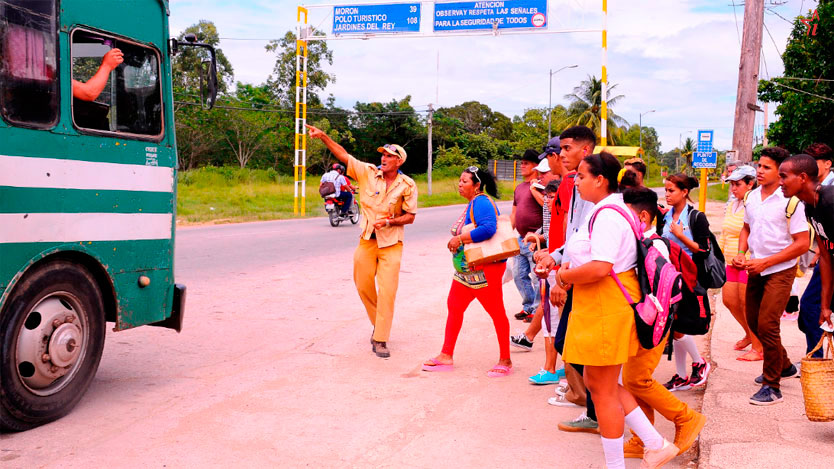
When it finally seemed that the Covid-19 gave a break to education in Ciego de Ávila so that students and teachers could return to the classrooms protected by the new "normality", the current situation with urban and inter-municipal transport, given the instability with fuel, has put on a tightrope the presence of those who reside in communities far from the student centers and set off the alarms for those responsible for guaranteeing the quality of the teaching-educational process.
It is quite clear to Norberto Roche Noa, provincial deputy director of Education, who sounds calm when he says that, to date, students who live far from schools have maintained their attendance at classes; however, the current situation with transport cannot be ignored and as it is better to be safe than sorry, an entire action plan has been designed, adapted to the peculiarities of each municipality, institution and even student, so that education reaches each one from them no matter how far away they are.
Thus, it has been conceived that, in the case of Primary Education, with more than 1,500 students who travel daily in the province, where the largest number corresponds to the main municipality (about 600) —according to the deputy director—, those who need public transportation attend educational institutions two days a week and the remaining three prepare with worksheets from home to give continuity to their preparation.
On the other hand, in the Basic Secondary School, around 2,560 schoolchildren live far from their educational centers, which, as Roche Noa details, is proposed to be cared for in the communities of residence by teachers and methodologists who will take them two days a week activities, worksheets, independent study guides and audiovisual materials.
In pre-university education, 200 students are registered who, every day, need to travel from distant areas to attend classes. In this situation, the proposal is that tenth graders come on Tuesdays, eleventh graders on Thursdays, and two days have been reserved for twelfth graders: Wednesday and Friday. However, the deputy director refers that due to the importance that the terminal grade has for both students and teachers, each territory has been asked to assess that, within the possibilities, these schoolchildren can attend every day so as not to see their preparation affected. for admission to the University.
In turn, Professional Technical Education foresees variations depending on the years and levels of its students, so that in the first year attendance will be an essential requirement on Tuesdays, Wednesday will correspond to the second, Thursday to the third and Friday to fourth. The rest of the time, "they will be linked to practical activities in institutions of the communities where they reside."
The specialist considers that families from Ciego de Ávila have internalized the disadvantages that being attended to at a distance entails for a student, hence the intentions of parents and school walk in the same direction and the obstacles with transportation are overcome today by the majority of the learners so that presence in the classroom continues to be a priority.
Nevertheless, since everything cannot be left to chance, other measures have been taken by the Temporary Work Groups in each municipality so that dealing with the “bottle” is not a real torment. In this way, Roche Noa specifies, the boarding points have been reinforced with inspectors so that students have preference, although this is not always a guarantee that some state car will stop, since more than once we have given accounts of those who ignore of this obligation; while in places where there is transportation for workers, it will be adjusted to the students' schedules so that they can use it on the way there and back.
With an eye on the future, the provincial deputy director speaks of the possibility of reorganizing the school network in some territories through the creation of mixed centers that can accommodate various teachings, a projection that requires teaching coverage and an infrastructure that is not achieved in a few months, but that, without a doubt, would be a huge relief for the many schoolchildren who, every day, face the road to get to the classroom.
